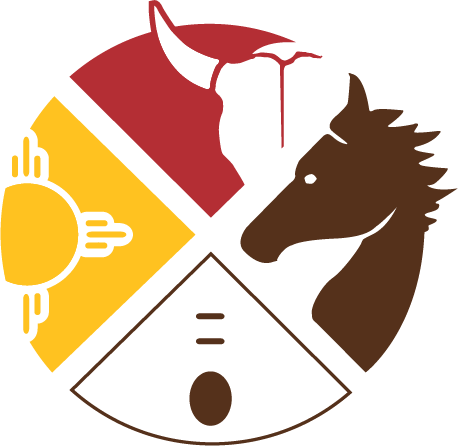Food
"Currently, [Lakota] food need is defined by the broader economy as surplus produce farmers need to sell or grocery items wholesalers have been unable to sell. The national commodities program sponsored by the U.S. Department of Agriculture has been promoted for its role in preventing hunger in poor U.S. communities, but it has also supplied income to farmers and food producers for their surplus produce. A nonprofit food bank provides foods donated by corporations for tax write-offs to help needy households. The foods provided have little to do with locally defined food needs."
— Lakota Culture, World Economy; Kathleen Ann Pickering, 2004, p. 133
The vast majority of Pine Ridge is currently a food desert. The nearly 3,500 square mile area (that's over 2 million acres) is served by only a small handful of food stores for its 30,0000 residents, including one highly overpriced grocery store, a couple of small convenience stores (with an inventory not far exceeding bagged chips, candy bars and soda) and a gas station. Many must make the trek to a Walmart 40 to 90 miles away to feed their families. Processed foods have been so prevalent throughout the last several generations that unhealthy eating habits have become a dangerous part of our lifestyle and culture.
Over many years of broken treaties, cultural cleansings and outright massacres, the Lakota, a warrior tribe of hunters and gatherers, have been confined to small but separate plots of land we'd have to farm in order to produce enough food to sustain our population. Without a heritage of agriculture, and with the near-extinction of the buffalo that sustained the Lakota since the beginning of time, our people have found themselves relying on government commodities - food aid that consists of surplus foods farmers and grocers cannot sell and highly processed foods that have led our people to drastically decreased health.
The grim results from years if reliance on food aid:
The rate of diabetes on the Reservation is reported to be 800% higher than the U.S. national average
Recent reports indicate that almost 50% of the adults on the Reservation over the age of 40 have diabetes. Over 37% of the population is diabetic
As a result of the high rate of diabetes on the Reservation, diabetic-related blindness, amputations, and kidney failure are common
Death due to heart disease is twice the national average
The population on Pine Ridge has among the shortest life expectancies of any group in the Western Hemisphere: approximately 47 years for males and 52 years for females.
OLCERI is committed to turning around these tragic statistics and enabling our people to thrive. Our people deserve access to healthy food, locally grown, in a manner respectful to our environment and our bodies. The organic food movement sweeping across the world has served as a hastening reminder that the processed, over-packaged foods we've become so accustomed to are poisoning us and creating waste and pollution in our world, although honoring our planet and respecting our food is far from a new idea to our people.
We aim to restore a healthy relationship between people and the food that sustains us by promoting a gardening culture through education and resources, establishing local seed banks and root cellars, and distributing food justly among our community. Along with food projects inspired by permaculture, we are also working to cultivate the passing down of wisdom from our elders about traditional uses of native wild edible and medicinal plants.

